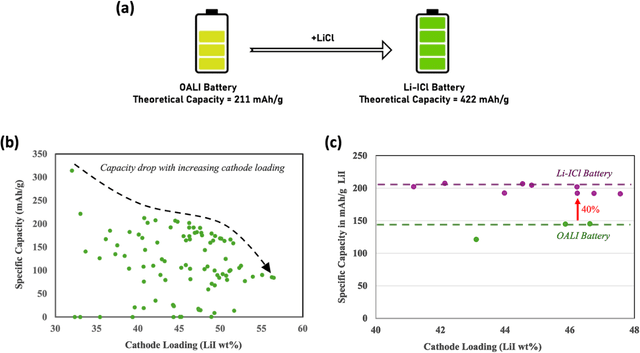Improving Electrolyte Performance for Target Cathode Loading Using Interpretable Data-Driven Approach
Paper and Code
Sep 03, 2024



Higher loading of active electrode materials is desired in batteries, especially those based on conversion reactions, for enhanced energy density and cost efficiency. However, increasing active material loading in electrodes can cause significant performance depreciation due to internal resistance, shuttling, and parasitic side reactions, which can be alleviated to a certain extent by a compatible design of electrolytes. In this work, a data-driven approach is leveraged to find a high-performing electrolyte formulation for a novel interhalogen battery custom to the target cathode loading. An electrolyte design consisting of 4 solvents and 4 salts is experimentally devised for a novel interhalogen battery based on a multi-electron redox reaction. The experimental dataset with variable electrolyte compositions and active cathode loading, is used to train a graph-based deep learning model mapping changing variables in the battery's material design to its specific capacity. The trained model is used to further optimize the electrolyte formulation compositions for enhancing the battery capacity at a target cathode loading by a two-fold approach: large-scale screening and interpreting electrolyte design principles for different cathode loadings. The data-driven approach is demonstrated to bring about an additional 20% increment in the specific capacity of the battery over capacities obtained from the experimental optimization.
 Add to Chrome
Add to Chrome Add to Firefox
Add to Firefox Add to Edge
Add to Edge